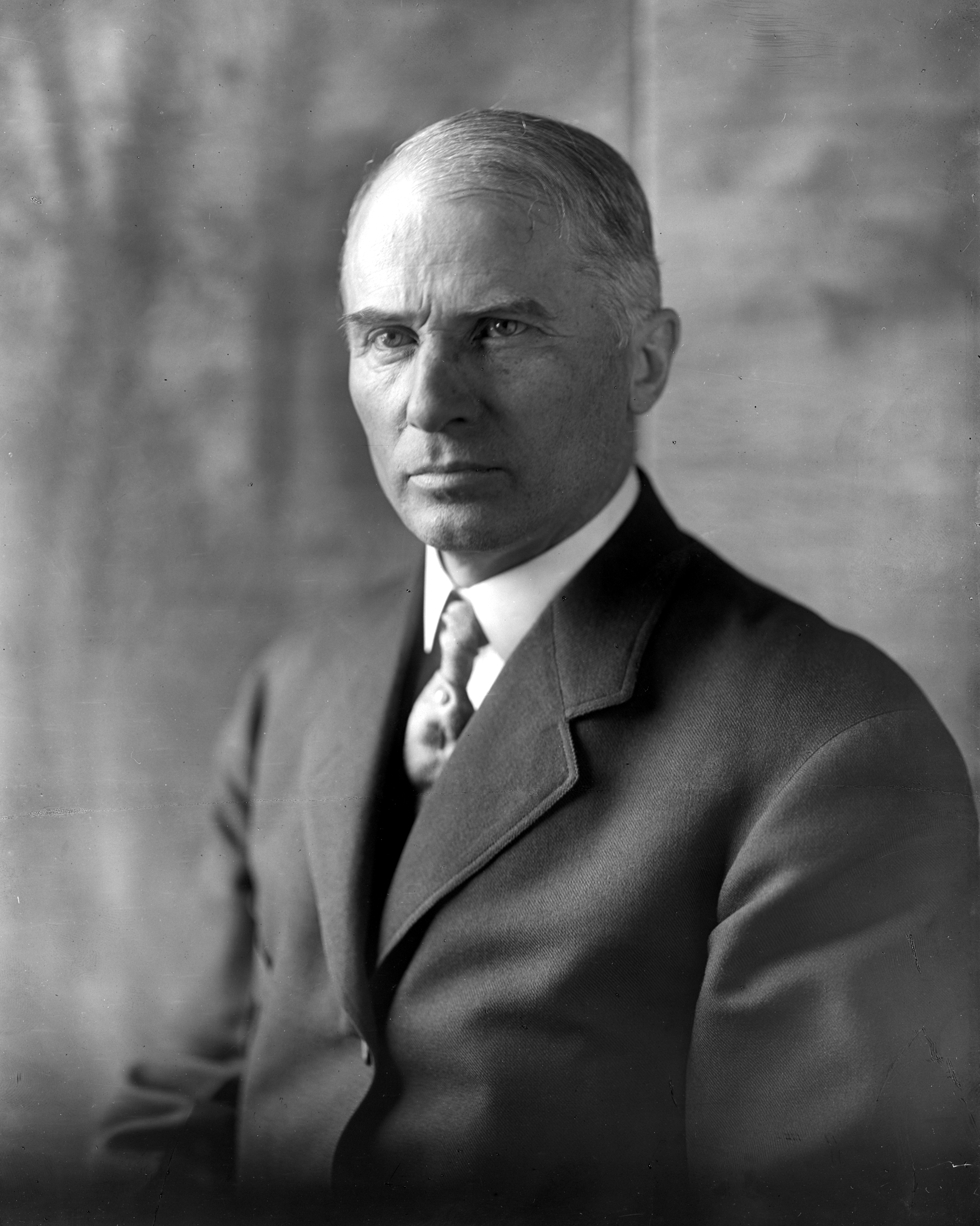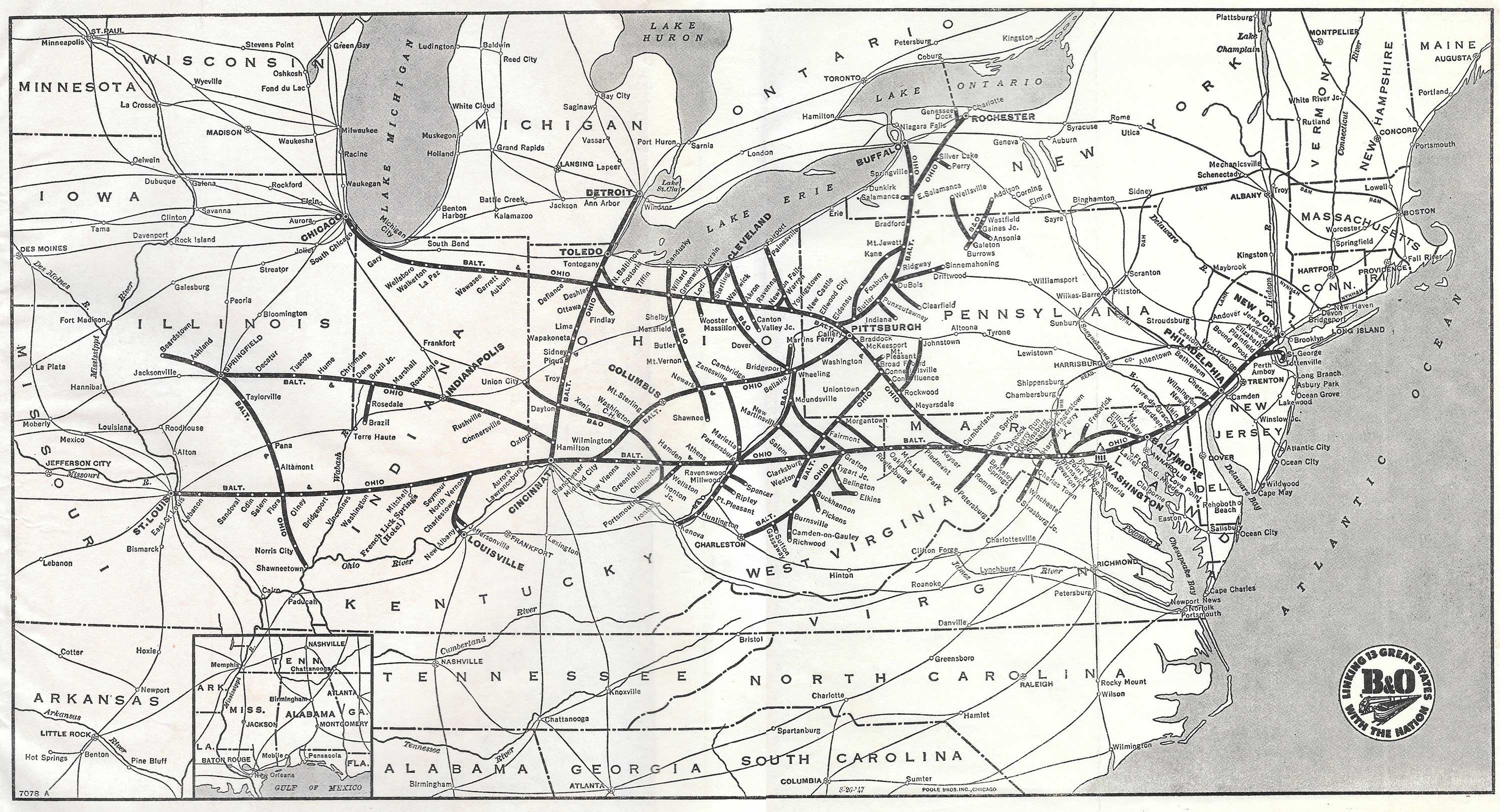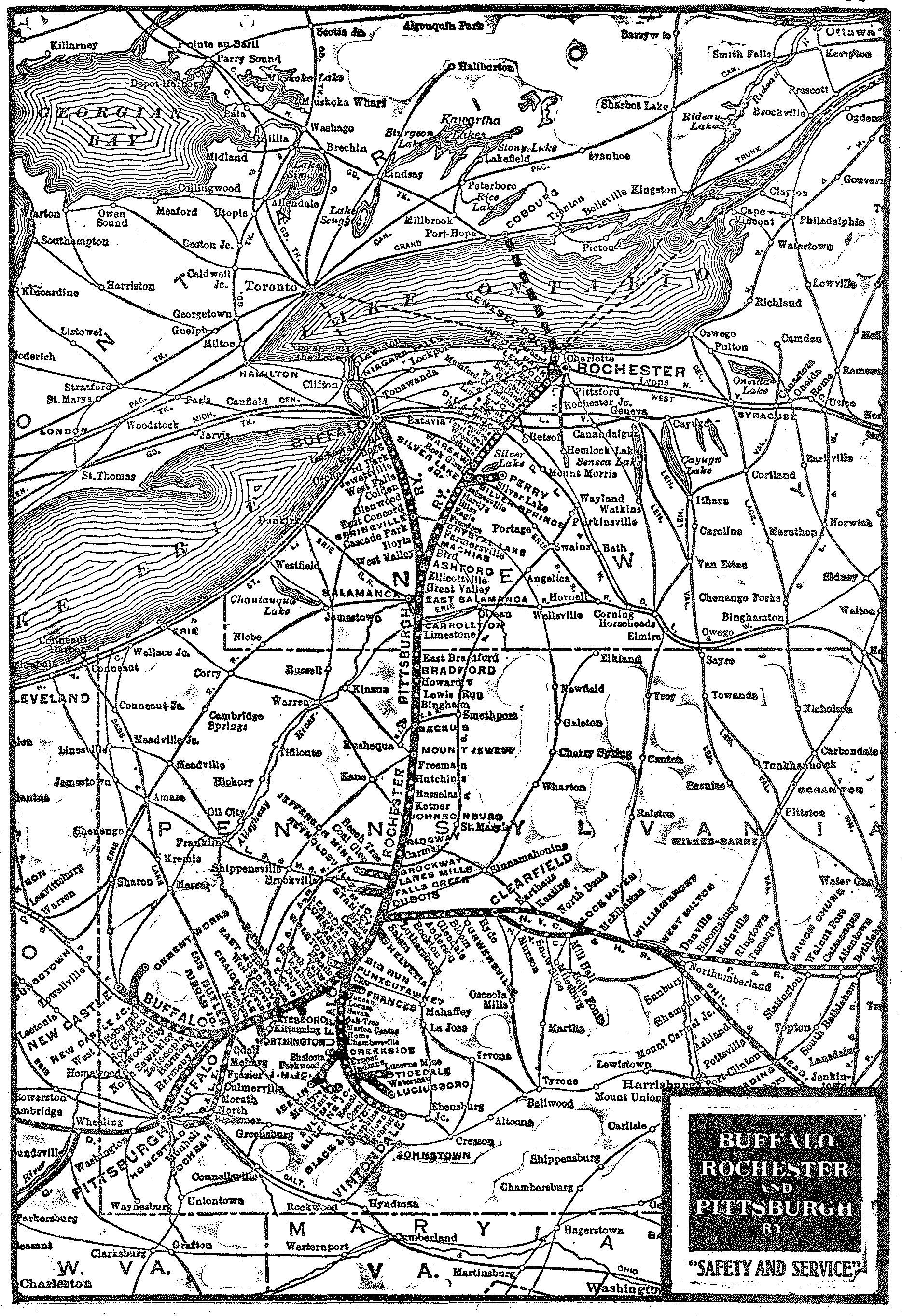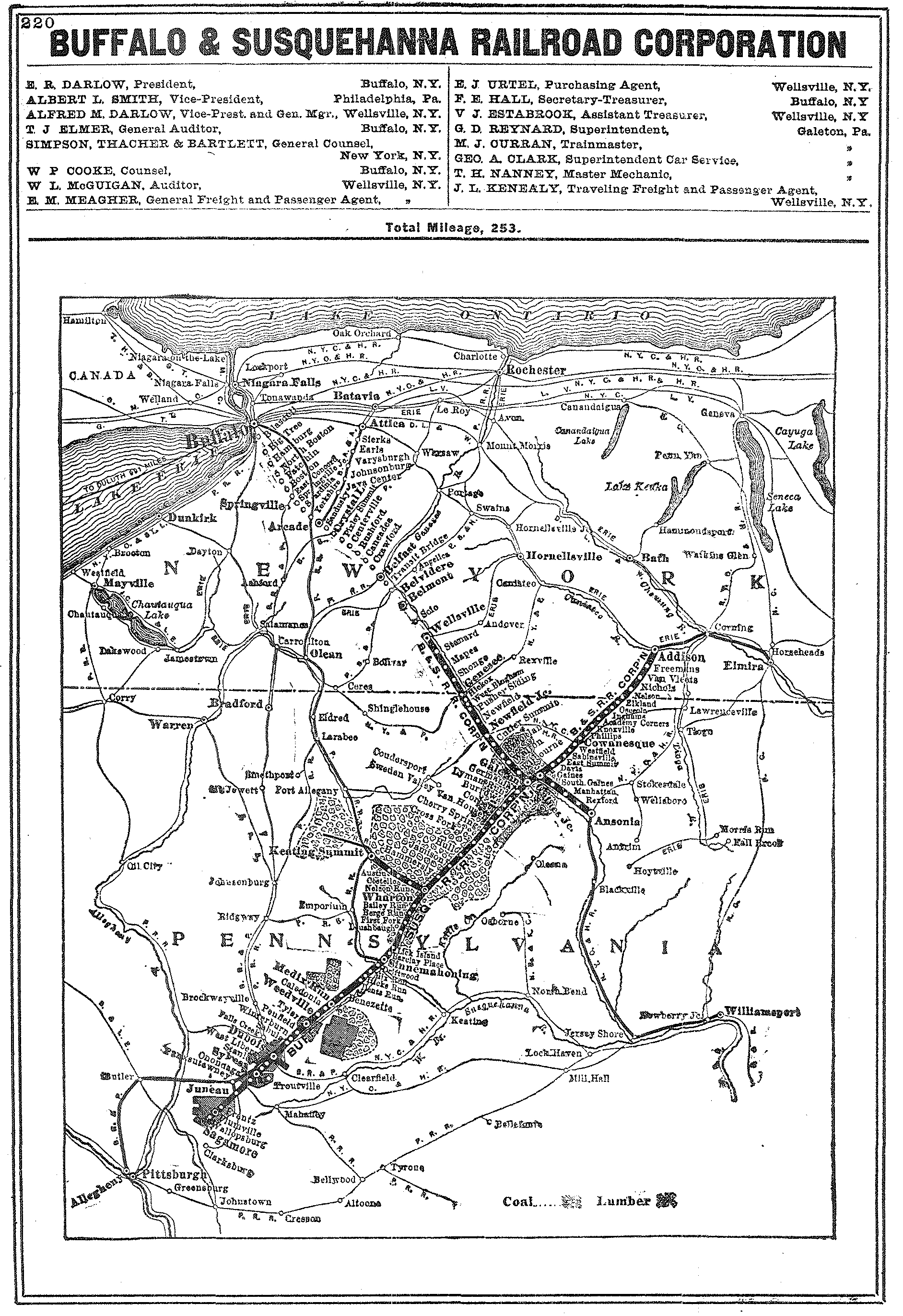Daniel Willard (B&O): Biography, Facts, Legacy
Last revised: March 1, 2025
By: Adam Burns
Daniel Willard's leadership of the Baltimore & Ohio, a company where he presided as president for more than 30 years (1910-1941), saw the railroad reach its greatest heights.
The B&O was a perennial underdog in the New York - Chicago market; the poor man's version of the Pennsylvania and New York Central railroads. However, under Willard the system held its own, greatly expanded, and undertook many capital improvements.
As noted in the book, "Daniel Willard and Progressive Management on the Baltimore & Ohio Railroad," by David Vrooman, Willard also established the friendly company culture, which persisted long after he left the railroad.
This was not lost on the traveling public and some folks continued to book trips aboard the "Best & Only" simply due to the railroad's extremely friendly and courteous staff.
Early Life
Daniel Willard, an esteemed figure in the American railway industry, was born on January 28, 1861, in Hartland, Vermont. Raised in a humble farming family, he displayed an unmatched passion for learning and perseverance from a young age.
Ensuring he pursued education amidst a rural backdrop, Willard enrolled at the Massachusetts Agricultural College and later transferred to the Massachusetts Institute of Technology, where he studied civil engineering. This education would later serve as a foundation for his groundbreaking career in the railroad industry.
Willard never had much interest in agriculture and set his sights on the railroad industry. It all began in 1879 when he was hired on by the Vermont Central Railroad as a track worker.
Railroads
He had only been at the VC a short time when he became a fireman, and was eventually promoted to engineer. As Willard became more adept at railroading he continued to rise through the ranks, and was later hired by the Minneapolis, St. Paul & Sault Ste. Marie (Soo Line) as a division superintendent.
Willard's career took a significant turning point when he was noticed by Frederick Underwood, then Soo's general manager. When Underwood moved to the Baltimore & Ohio as the company's general manager in 1899, Willard was brought along.
He also followed Underwood to the Erie where the latter was president from 1901-1926. During his time here he gained significant exposure to railway operations and management, setting the stage for his role with the B&O.
Baltimore & Ohio
After his time at the Erie, Willard moved on to the Chicago, Burlington & Quincy in 1904 as its operating vice president. He remained here until achieving the presidency of the Baltimore & Ohio in 1910.
Willard was handed the reins of a company facing severe financial and organizational issues, as well as a property that was in generally poor condition.
Upon assuming the presidency, he swiftly prioritized the improvement of services and instigated extensive reforms. This led to the replacement of old tracks, bridges and facilities, a move that had immediate and positive effects on the B&O's operations.
Capital Improvements
Investing deeply in his employees, Willard initiated an employee welfare program, increased wages, and made substantial improvements to working conditions, leading to a more productive workforce.
His commitment and devotion to the organization and its employees led to marked improvements in overall operations and earned him the nickname "Uncle Dan."
During the early 20th century the major Class 1 systems were still expanding, growing largely through acquisition of smaller lines although occasionally still building new routes.
For Willard, the immediate focus was to improve the B&O's dilapidated infrastructure while also carrying out corridor upgrades.
He eliminated many of the B&O's notable bottlenecks, such as Magnolia Cutoff in West Virginia and expanding the Philadelphia - Chicago main line to double-track (which included a new tunnel over Sand Patch).
At A Glance
Daniel Spaulding Willard (father) Mary Ann Daniels (mother) | |
The Magnolia Cutoff daylighted the Doe Gully Tunnel, located west of Martinsburg, West Virginia. This single-tracked bore along the B&O's busiest main line, caused numerous delays as trains waited their turn to pass.
The cutoff consisted of two substantial bridges, four tunnels, and several cuts and fills. The Doe Gully Tunnel was removed entirely and daylighted; the subsequent large cut was wide enough to house four tracks. The project began in 1913 and was completed the following year.
Willard's modernization efforts extended beyond the physical development of the railroad. Under his guidance, the Baltimore and Ohio adopted advanced techniques, introducing centralized traffic control and utilizing new technologies such as diesel-electric locomotives.
Acquisitions
Beyond capital improvements, Willard oversaw several additions to the B&O system. Perhaps the largest was the formal purchase of the Cincinnati, Hamilton & Dayton Railway, a system the B&O had first eyed in 1909 under President Oscar Murray.
The C&HD's heritage could be traced as far back as 1846. It was chartered as the then Cincinnati & Hamilton Railroad to connect its namesake cities and completed in 1851. Over the years, the C&HD underwent several expansions and acquired many smaller railroads, significantly increasing its track mileage.
By 1915 the road contained about 1,000 route miles running from Cincinnati to Toledo, Ohio as well as between Ironton, Ohio and Decatur, Illinois via Indianapolis.
However, by the time the B&O had acquired the system financially difficulties had left it reduced to about 400 miles with its most important remaining corridor being the Cincinnati - Toledo route.
The CH&D nevertheless became a key part of the B&O's Cincinnati Division and contributed to the extensive growth of B&O's operations in the Midwest.
Throughout the 20th century, the CH&D remained as part of the larger rail networks and it is remembered today as an important component of Ohio's railroad history. Its legacy lives on in the aspects of operations of the modern Class I, Regional, and Short Line railroads.
Two important coal feeders added during Willard's tenure was the West Virginia & Pittsburgh (leased since 1890) and the Coal & Coke Railroad. The former ran south of Grafton, West Virginia to Richwood and Pickens.
In their book, "Baltimore & Ohio Railroad," authors Kirk Reynolds and David Oroszi note the entirety of this line, and its various spurs, ultimately accounted for 60% of the B&O's coal business.
The 200-mile Coal & Coke contained less coal traffic but provided a connection to the state capital of Charleston where interchanges were established with the Chesapeake & Ohio and New York Central.
Finally, the B&O expanded across the Pennsylvania during the late 1920s and early 1930s; the railroad acquired a controlling interest in the Buffalo, Rochester & Pittsburgh in 1929 (purchased outright in 1932) which provided additional coal traffic as well a connection to Buffalo and Rochester, New York.
In 1932, Willard also added the Buffalo & Susquehanna; this small, rural system connected with the BR&P at Du Bois, Pennsylvania, running as far south as Sagamore and as far north as Addison and Wellsville, New York.
The ultimate goal of the B&S acquisition was to extend the B&O east to Williamsport and establish a connection with the Reading. From this point the B&O would have enjoyed a direct routing to the New York, New Jersey and New England markets.
While the routing would not necessarily have been comparable to the Pennsylvania's high speed main line across its home state, it nevertheless would have provided stiff competition by allowing New England/Northeastern roads to funnel traffic over the B&O to Midwestern markets like Chicago and St. Louis (similar to the "Alphabet Route" of 1931).
Legacy
Daniel Willard married Bertha Leone Elkins on March 2, 1885 in Troy, Vermont. They had two children, Harold Nelson Willard and Daniel Willard, Jr. The family lived in Baltimore, where Willard was a respected and influential member of the community.
Despite his intense commitment to the Baltimore and Ohio Railroad, Willard also devoted time to public causes. He served in various World War I committees and held leadership roles in organizations that promoted efficiency in industry and government.
For his efforts, Willard was awarded the Distinguished Service Medal by President Woodrow Wilson in 1920. He was also the recipient of honorary degrees from several universities in recognition of his immeasurable contributions to the rail industry and his commitment to public welfare.
Daniel Willard passed away on July 6, 1942. His death symbolized the end of an era in the history of the Baltimore and Ohio Railroad, with his leadership having had an incredible impact on the company's growth and success.
During his tenure, Willard succeeded in steering the railroad through economic recessions, labor disputes, and two World Wars. His tireless efforts to turn around the Baltimore and Ohio Railroad's fortunes made him one of the most prominent figures in American railroad history.
Although precise figures are difficult to determine, it is agreed that Daniel Willard amassed substantial wealth during his lifetime, primarily due to his long, fruitful career in the railroad industry. His wealth was diligently managed, guaranteeing the financial security of his family while also facilitating philanthropic work.
Willard's legacy lives on, primarily through the institutions he influenced and his contributions to American railroading. His innovative leadership and visionary infrastructure improvements changed the face of the Baltimore and Ohio Railroad, propelling it into a new era of success.
Daniel Willard’s life story is a testament to dedication, leadership, and innovative thinking. His pioneering efforts in the railroad industry and public service continue to inspire future generations.
His far-reaching impact has undoubtedly earned him a distinguished place in history, underlining the significant role he played in shaping America's industrial development.
As students delve deep into the biography of Daniel Willard, they will inevitably recognize the immense contributions he made to U.S. railroad history and public life.
Sources
- McGuirk, Martin J. Baltimore & Ohio Railroad in the Potomac Valley. Waukesha: Kalmbach Publishing, 2001.
- Reynolds, Kirk and Oroszi, David. Baltimore & Ohio Railroad. Osceola: MBI Publishing, 2000.
- Vrooman, David M. Daniel Willard and Progressive Management on the Baltimore & Ohio Railroad. Columbus: Ohio State University Press, 1991.
- Withers, Bob. Baltimore & Ohio Railroad In West Virginia, The. Charleston: Arcadia Publishing, 2007.
Recent Articles
-
Wisconsin Dinner Train Rides In North Freedom!
Jan 06, 26 10:18 PM
Featured here is a practical guide to Mid-Continent’s dining train concept—what the experience is like, the kinds of menus the museum has offered, and what to expect when you book. -
Pennsylvania Dinner Train Rides In Boyertown!
Jan 06, 26 06:48 PM
With beautifully restored vintage equipment, carefully curated menus, and theatrical storytelling woven into each trip, the Colebrookdale Railroad offers far more than a simple meal on rails. -
North Carolina ~ Murder Mystery ~ Dinner Train Ride
Jan 06, 26 11:26 AM
While there are currently no murder mystery dinner trains in the Tarheel State the Burgaw Depot does host a murder mystery dinner experience in September! -
Florida's - Murder Mystery - Dinner Train Rides
Jan 06, 26 11:23 AM
Florida, known for its vibrant culture, dazzling beaches, and thrilling theme parks, also offers a unique blend of mystery and fine dining aboard its murder mystery dinner trains. -
New Mexico's - Wine Tasting - Train Rides
Jan 06, 26 11:19 AM
For oenophiles and adventure seekers alike, wine tasting train rides in New Mexico provide a unique opportunity to explore the region's vineyards in comfort and style. -
Ohio's - Wine Tasting - Train Rides
Jan 06, 26 11:14 AM
Among the intriguing ways to experience Ohio's splendor is aboard the wine tasting trains that journey through some of Ohio's most picturesque vineyards and wineries. -
Connecticut's Thomas The Train Rides
Jan 06, 26 11:06 AM
For 2026, the tour stop at Essex brings Thomas (and Percy, too) to the historic Valley Railroad for a full day of events for the kids. -
Maryland's Thomas The Train Rides
Jan 06, 26 11:00 AM
In 2026, the B&O Railroad Museum in Baltimore welcomes the Let’s Rock, Let’s Roll Tour with four event days that combine a Thomas-themed excursion with other activities. -
Tennessee's Thomas The Train Rides
Jan 06, 26 10:51 AM
Set on the grounds of one of the Southeast’s best-known operating railroad museums, the Thomas the train event blends kid-friendly fun with the unmistakable sights, sounds, and atmosphere of a real wo… -
Georgia's Thomas The Train Rides
Jan 06, 26 10:44 AM
Day Out With Thomas is set to roll back into Cordele in 2026, bringing Thomas the Tank Engine and a full family festival to the SAM Shortline at Georgia Veterans Memorial State Park. -
Staten Island Rapid Transit
Jan 06, 26 10:02 AM
The Staten Island Rapid Transit has long served Staten Island since the 19th century and today is known as the Staten Island Railway. -
New York Dinner Train Rides In The Adirondacks!
Jan 05, 26 09:45 PM
Operating over a restored segment of the former New York Central’s Adirondack Division, the Adirondack Railroad has steadily rebuilt both track and public interest in passenger rail across the region. -
Ohio Dinner Train Rides On The CVSR!
Jan 05, 26 08:32 PM
While the railroad is well known for daytime sightseeing and seasonal events, one of its most memorable offerings is its evening dining program—an experience that blends vintage passenger-car ambience… -
Pennsylvania's - Wine Tasting - Train Rides
Jan 05, 26 01:08 PM
Wine tasting trains are a unique and enchanting way to explore the state’s burgeoning wine scene while enjoying a leisurely ride through picturesque landscapes. -
West Virginia - Wine Tasting - Train Rides
Jan 05, 26 01:02 PM
West Virginia, often celebrated for its breathtaking landscapes and rich history, offers visitors a unique way to explore its rolling hills and picturesque vineyards: wine tasting trains. -
Virginia - Wine Tasting - Train Rides
Jan 05, 26 12:58 PM
Wine tasting trains in Virginia provide just that—a unique experience that marries the romance of rail travel with the sensory delights of wine exploration. -
Utah - Wine Tasting - Train Rides
Jan 05, 26 12:37 PM
Utah, a state widely celebrated for its breathtaking natural beauty and dramatic landscapes, is also gaining recognition for an unexpected yet delightful experience: wine tasting trains. -
Kentucky Valentine's Train Rides
Jan 05, 26 12:31 PM
If you’re looking for a date night that feels a little more cinematic than the usual reservation-and-a-movie routine, Bardstown’s My Old Kentucky Dinner Train delivers the kind of evening you remember… -
Pennsylvania Valentine's Train Rides
Jan 05, 26 12:12 PM
Tucked amid the rolling farmland of Lancaster County, Pennsylvania, the Strasburg Rail Road stands as one of the most celebrated and successful heritage railroads in North America. -
New York's - Murder Mystery - Dinner Train Rides
Jan 05, 26 11:01 AM
New York State, renowned for its vibrant cities and verdant countryside, offers a plethora of activities for locals and tourists alike, including murder mystery train rides!
























